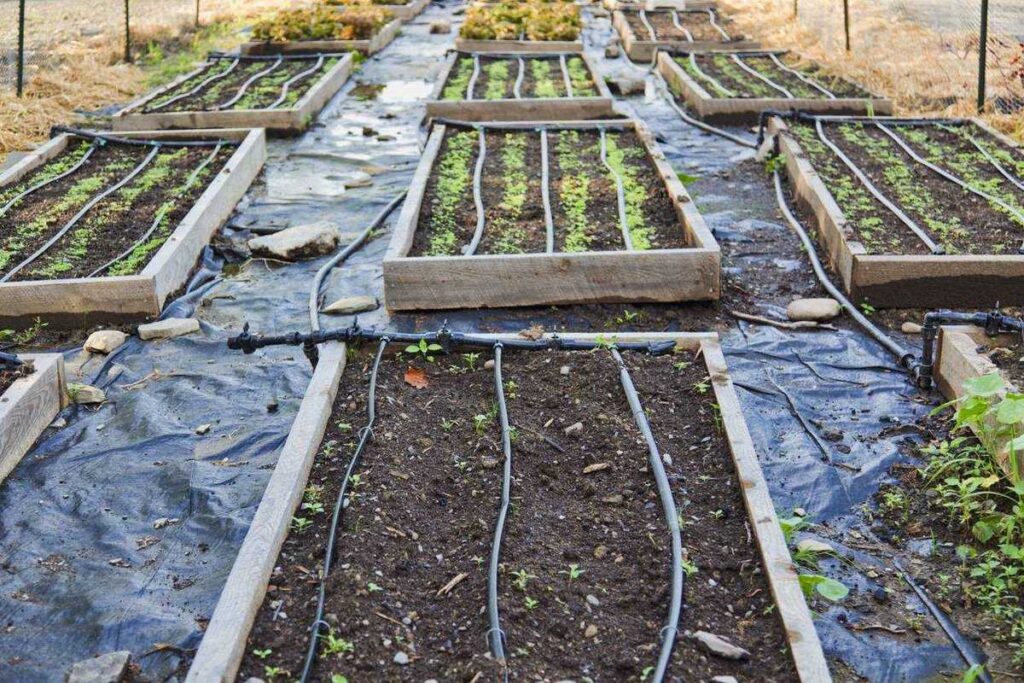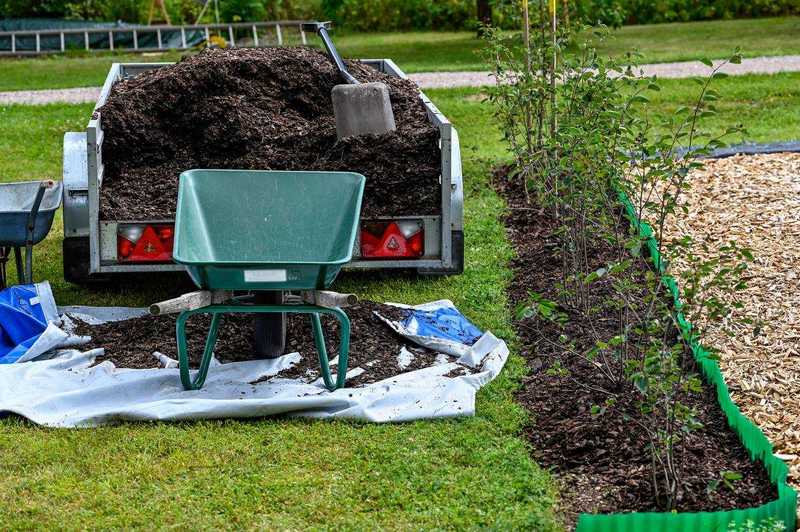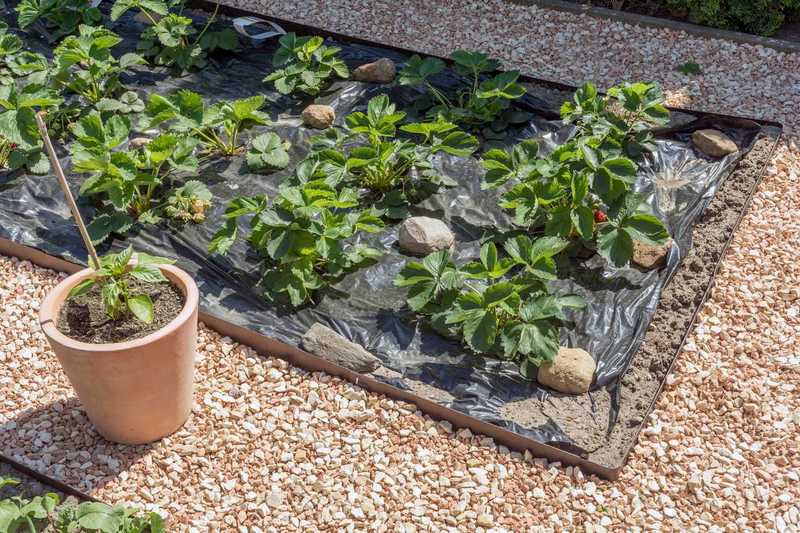
Everyone knows the principle and the advantages of mulching. In summer, its main objective is to limit the evaporation of water as much as possible and thus avoid a few watering sessions. Incidentally, this technique also protects your soil and limits the development of weeds. However, covering the ground with a mulch cloth is also beneficial, especially in winter.
To protect your vegetable garden as well as your soil in winter, several precautions must be taken when it comes to using a mulch cloth. It is indeed important to know when to lay the mulch cloth and what are the different stages of installation.
What is a mulch cloth used for?
Also called protective tarpaulin, mulch cloth is a garden accessory that has been used for several years for landscaping. Whether in private gardens or in public vegetable gardens, this material is used to control weeds and protect the soil and crops. Indeed, by blocking the light, the mulch fabric prevents the process of photosynthesis and therefore limits the growth of weeds.
It also has many ecological advantages. The mulch cloth allows for example to keep the soil moist. This reduces the number of waterings and saves water. By increasing the temperature of the soil, this accessory accelerates also promotes plant growth. The use of the protective cover is therefore particularly important in winter.
This ecological and economical material is also resistant to UV rays and high temperatures. To retain the soil on your sloping embankments, it is sometimes advisable to lay a mulch cover over the entire surface. The mulch can also be used for vegetables, for fruit trees and ornamental trees, for perennials as well as for shrubs and hedges. It effectively makes it possible to have clean crops by limiting their contact with the land as much as possible.

The different types of mulch fabrics
Before knowing how to use mulch cloth in winter, it is essential to know the different types of mulch cloth that exist on the market. This allows you to know which model to use for your vegetable garden. There are generally two types of mulch covers.
Synthetic mulch fabrics
Synthetic mulch sheets are generally made from polypropylene. Thanks to their durability and high resistance, they are the most popular models and therefore the most used. Once installed, they can stay in place for an average of two to ten years depending on the weight. Some models can even be used for 15 years without the risk of deteriorating over time.
Synthetic fabrics are most often indicated for hedges, fruit trees, shrubs, or for the slope of an embankment to be vegetated. These mulch sheets are the least expensive. They are often woven.
Biodegradable mulch fabrics
Mulching sheets made from biodegradable materials are most often recommended for short-term mulching due to the fact that they degrade quickly. Designed with natural materials of plant origin (coconut, jute, hemp, sisal, etc.), they are particularly effective and at the same time, more expensive.
This canvas does not only have ecological advantages. Indeed, by degrading in the soil, the biodegradable mulch fabric provides essential elements for the proper development of your crops. They therefore improve and enrich your soil while protecting your crops.
It also has an aesthetic advantage since thanks to its color, it easily manages to blend more harmoniously with your vegetable garden. Apart from the vegetable garden, the biodegradable mulch cloth is also ideal for perennial plantations in beds.
How to lay a mulch for a vegetable patch?
Laying a mulch is not complicated, but there are a few things to take into account. To facilitate installation and fixing, it is strongly recommended to install your equipment during a frost-free period. Apart from this detail, the installation of a mulch cover can be done at any time of the year.
For a vegetable garden in winter, the installation of the canvas will be done before planting, that is to say either in spring or in autumn. Weeds will need to be removed before unrolling the mulch sheet. Indeed, once it is installed, you will no longer be able to work the soil.
Soil preparation
The mulching fabric, whatever its model, must be placed on bare ground. Before this installation, the ground must be carefully prepared. Depending on the condition of the soil and its nature, preparation involves digging it out and aerating it with a digging fork or a grelinette. If the area to be prepared is large, use a tiller. This machine will also serve you to level the ground.
The second phase of the preparation consists of removing any stones, large clods of earth as well as various debris. Finally, using a hook and a rake, level the surface on which you are going to lay the mulch sheet.
Laying the mulch cloth on the ground
Once the soil is properly prepared, you can then move on to unrolling the mulch cloth.
To start, unroll the canvas on the prepared surface, taking care to let it extend at least 8 to 12 inches from the edges. So plan to take this excess canvas into account when purchasing your equipment. If you use different mulch sheets or want to lay tiles, in this case, overlap the edges by at least 20 cm before fixing them with specific polypropylene nails or using “U” staples.
Secure the mulch to the ground
The fixing of the mulch cloth strongly depends on the soil. Two cases can thus arise. When the prepared surface is level, stretch the canvas as much as possible on the ground and anchor it as you go along the edges using the mulching canvas clips. This should be done approximately every 20 to 25 cm. Once the staples are in place, you can bury the canvas on the edges.
On the other hand, when it is a sloping surface, you will have to start the binding from the top of the slope. To do this, you need to dig a mini-trench about 8 inches deep, 2 inches from the edge of the tarp. Bury the mulch cloth in this trench, taking care to stretch it as much as possible and as you progress. At this point in the installation, you will need the help of another person to tend the canvas while you bury it in the trench.
Finally, strengthen the fixing to the ground by placing staples every 20 cm and perpendicular to the edge of the canvas. To fix the canvas at the bottom of the slope, stretch it correctly across its width and anchor it in the same way as for the top.
As for the excess canvas, you can still secure it with staples, bury it in the earth or cut it with a pair of scissors.
Planting plants on a mulch canvas
To plant with the mulch cloth
- cut it in a cross with a cutter at the different locations of the plants.
- Fold the pieces of canvas underneath so they don’t interfere with planting time.
- Dig your hole, install the plant then tamp the earth at its feet.
- Water then cover the soil with the pieces of canvas left on standby.

Why use a mulch for a vegetable garden in winter?
Installing a mulch cover for a vegetable garden in winter offers many advantages. Indeed, this material plays an important role for the soil and also allows you to get off to a good start when it comes to making your vegetable garden in the spring.
The mulch fabric protects the vegetable garden soil against the cold by reducing temperature variations. This device contributes to the conservation of heat in the soil by serving in particular as a thermal buffer between the soil and the air.
It also helps protect the roots of your plants against frost and prevent the soil from settling under the action of snowfall.
In addition, when you opt for a biodegradable mulch fabric, the latter enriches the soil with humus during its decomposition. This contributes to the fertility of your land and therefore also prepares your soil for a future vegetable garden in the spring. By using a biodegradable mulch for several years, you significantly improve the quality of your soil. Your future plants will thus be able to develop more quickly.
Finally, the mulch for a vegetable garden in winter is an excellent shelter for the small insects that live in the soil. These insects play an essential role in the health of the soil by enriching it thanks in particular to their droppings. A contribution of humus and therefore of organic matter which improves the quality of your soil. The use of the mulch cloth therefore contributes to the preservation of biodiversity. From an aesthetic point of view, the mulch cloth helps keep your vegetable garden clean during the winter.

